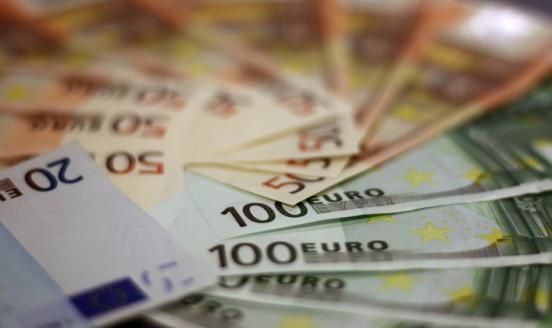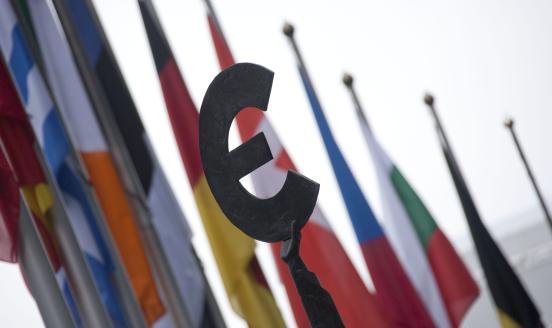Half empty, half full
G20: The glass is half-empty (Jean Pisani-Ferry)
At the end of a long sleepless night, the G20 ministers on Saturday agreed on a list of indicators they intend to monitor in order to “maintain current account imbalances at sustainable level”. These are “(i) public debt and fiscal deficits; and private savings rate and private debt (ii) and the external imbalance composed of the trade balance and net investment income flows and transfers, taking due consideration of exchange rate, fiscal, monetary and other policies”. Syntactic puzzles apart, this sounds as a very straightforward list of indicators – in some respects as mere accounting. But there are three reasons to worry.
First, long and painful negotiations were necessary to agree on this list, as if ministers had had different accounting frameworks in mind. Harvard’s Richard Cooper once observed that the main obstacle to coordination is not that countries have different interests, but that they have different representations of the world. On the face of it, the members of the G20 seem to have found it excessively difficult to agree on what is an external balance is.
Second, this week-end’s achievement must be measured against the ambitions set at the Pittsburgh summit two years ago. At that time the focus was on coordination, and the leaders launched what they called a “Framework for Strong, Sustainable and Balanced Growth” which committed G20 members to “agree on shared policy objectives” that should be “updated as conditions evolve”, and to “set out their medium-term policy frameworks and work together to assess the collective implications of [their] national policy frameworks”. At the time they were not shy enough to refrain from speaking openly of current account surpluses. On the contrary the G20 countries with “significant external surpluses” pledged to “strengthen domestic sources of growth” while those with “significant external deficits” pledged to “support private savings and undertake fiscal consolidation”. The words back then were unambiguously clearer and stronger than they are now.
Third, the G20 ministers have only agreed about indicators. They have not yet entered the business of setting targets or benchmarks and they have not decided whether deficit and surplus countries should be treated symmetrically. These discussions will likely prove even more difficult than those of this week-end.�
So there is no reason to cheer. True, presidencies are made to break deadlocks and the French presidency was able to reach agreement. True, the need for international coordination is less than it was in 2009. But true also, in the field of economic coordination at least, the G20 seems to have entered a zone of diminishing returns.
G20: The glass is half-full (André Sapir)
Before getting into the details of the communiqué published at the end of the meeting held in Paris on 18-19 February it is good to remember that it was a meeting of finance ministers and central bank governors, not a summit of leaders. Viewed in this perspective, the agreement on a set of indicators to implement the “Framework for Strong, Sustainable and Balanced Growth” agreed upon at the 1999 Pittsburgh summit is an important step forward.
The inclusion of “the external imbalance composed of the trade balance and net investment income flows and transfers, taking due consideration of exchange rate, fiscal, monetary and other policies” as one of the two indicators should be viewed as an important concession by China for two reasons. First, although it does not refer explicitly to the “current account”, which has become politically charged, the communiqué uses its more prosaic accounting definition, namely “the trade balance and net investment income flows and transfers”. The French have a beautiful word for this: they call it a “pirouette”. Second, the ministers and central bank governors explicitly recognize, and for the first time in a G20 communiqué, the existence of a link between “exchange rate policy” and the current account.
Not only are the two indicators important, but the fact that ministers and central bank governors have decided to agree at their next meeting in April on “indicative guidelines against which each of these indicators will be assessed” is a further step forward. True the communiqué explicitly mentions that these indicative guidelines are not “targets”, but this was never realistic despite the proposal made last year by Secretary Geithner to limit current account imbalances to 4 percent.
Although less publicized by the media than the agreement on indicators, the G20 communiqué also reflects contains interesting progress in two other areas.
One is commodity prices. Ministers and central bank governors rightly resisted calls for measures limiting price fluctuation. Instead they expressed “concerns about consequences of potential excessive commodity price volatility”, hence focusing on “food security” which is particularly important for developing countries. The second area where progress was made in Paris is the reform of the financial sector. Here ministers and central bank governors set deadlines for several deliveries. For instance, they asked the Financial Stability Board to provide “comprehensive proposals to strengthen its governance, resources and outreach” at their next meeting in April. They also demanded that the FSB, together with other bodies, come forward with “common principles on consumer protection” by their October meeting.
Altogether, therefore, the Paris meeting of G20 finance ministers and central bank governors should be seen as a useful step towards the preparation of the G20 summit later this year.



